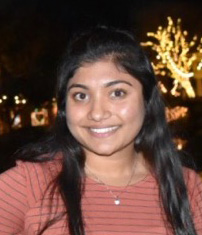Bay Area sibling dynamics: the moral struggles faced by the oldest and youngest child
October 26, 2017
Here in the Bay Area, a common day most likely involves boba hangouts, iPhones and stressing over grades. But a key trend hidden under the tech-savvy crowd of the San Ramon Valley seems to be the difference in treatment between younger and older siblings, the reason being, increased standards in the pressure cooker known as Dougherty Valley High.
It’s safe to say that first impressions last. In reality, those are the ones which set an important precedent-whether we like it or not-corresponding with how we’ll handle a particular object/person/situation in the future.
Often, older siblings are the ones showered with attention and care, but when the younger sibling rolls around, due to the process having repeated itself for a second time now, less attention-to-detail is placed on the younger ones. This, in turn, gives them the easy-going childhood every child dreams of having, but also often puts them at a significant disadvantage compared to their older sibling.
The relationship siblings have is very unique. However, an increasing trend has been noted from the pressures placed on the younger sibling to also succeed. Studies have shown younger siblings have been proven to perform worse when more attention is given to the older siblings. This is especially prominent when the older sibling is academically stronger and and thus is more motivated to do well in school. This theory was observed on sibling duos in the Bay Area in order to explain the scientific material already published.
This performance gap can be seen at all age levels and siblings in various grades. Rahul and Ramya Racharla, 8 and 12 respectively, are both very different. Ramya, an avid tennis player is vastly different than her brother Rahul, who loves to code. They both feel as if they receive equal support and attention from their parents, regardless of their abilities. “I feel like I want to do better when my brother is watching,” said Ramya being asked about her role model presence. Rahul on the other hand said his sister’s success doesn’t impact him greatly, however “She [Ramya] gets trophies and medals and I want that too,” Rahul said.
Tanirika Singh and her brother Pradyun are also siblings, with an age gap of one year. Pradyun is part of a gifted program as an eighth grader, however this makes no difference to Tanirika, grade 10, in terms of competition. Tanirika and her brother are seen as equal and both of their achievements are equally weighted. When her brother achieves a goal she “genuinely feels happy when he does good [in something].” The only pressure she truly faces is being a good role model for her brother.
Upon interviewing several subjects it could be concluded that the older sibling in reality faces more pressure to set a good example for their sibling, and the younger sibling could possibly face less stressful situations, having learned from the mistake an older one has likely made in the past. Nevertheless, younger siblings continue to be overlooked in society and underappreciated — something that seriously needs to change.


